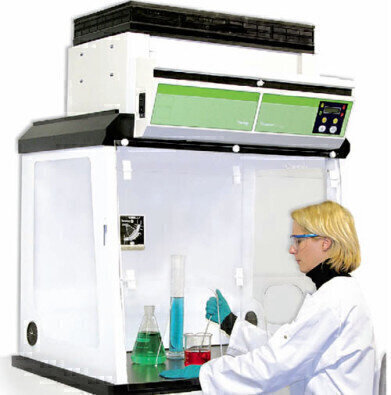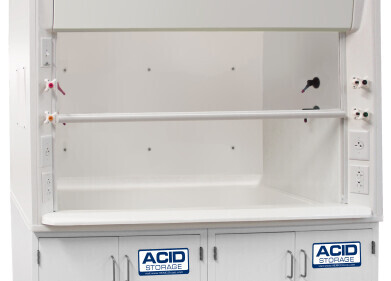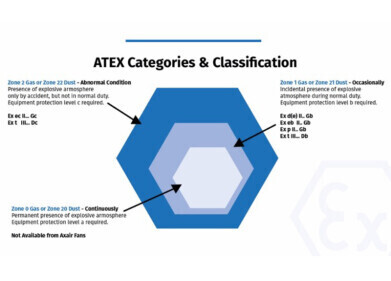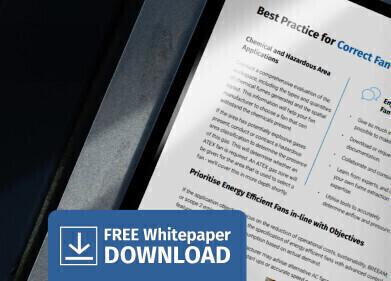Fume Extractors
About the use of Ductless Filtration Fume Hood?
Apr 29 2009
The laboratory is a work environment which presents many chemical hazards to which lab technicians are daily exposed, often undervaluing the threat for their health. The routine, the fact to get used to the odours, the lack of information, the obligation for results, among other priorities... Here ErLab look at the factors which, most of the time, will make the laboratory staff unaware that it is possible to work in total safety.
The risk assessment is the first step leading to the operator safety. The TLVs* are a reference indicator to set up the necessary protection tools. The choice of the various protection tools must be done in adequacy with the issue to be solved...
What is a ductless filtration fume hood?
A ductless filtration fume hood is a ventilated enclosure equipped with an activated carbon filter to protect the operator and the environment during the handling of liquid and/or gaseous chemicals. This protection device is ductless, which enables to move it freely within the laboratory.
Can the ductless filtration fume hood be used instead of a traditional ducted fume hood?
These two equipments enable to protect the operator’s health. Each one of these tools has its own characteristics with their advantages but also their limitations of use:
The traditional ducted fume hoods – according to the models- enable to work with the majority of the chemical products, whatever the toxicity levels and quantities are.
However, this fixed device is expensive to install, needs the installation of a complete ducted extraction system to exhaust the toxics, and an air supply system to compensate the depression caused by the use of the hood. This whole installation requires an air conditioning system to stabilise the lab temperature, which dramatically increases the expenses linked to the energy consumption. Moreover, all the toxic substances released in the environment are an additional source of pollution. Therefore, the requirements of the BS EN 14175 related to the installation of a ducting system on a building roof must be respected. After the installation of the ducted fume hood, the additional costs of maintenance must not be neglected. The different criteria and control systems, air face velocity, containment, noise level, VAV (variable air volume), electronic components, represent some additional and repeated costs, which will allow guaranteeing the use of a standard compliant product, essential for the operator safety.
The ductless filtration fume hood offers a different frame of use. As it is ductless, the supplier of the unit must commit itself to guarantee a total filtration to ensure the user’s protection. This protection device enables to work with different types and quantities of chemical products, provided that these chemicals can be retained by the activated carbon filter. The activated carbon has the capacity to adsorb a liquid or gaseous chemical product according to its particular physical-chemistry properties. Based on these criteria, the chemical products won’t behave the same way on one type of carbon. Therefore, an activated carbon filter will not offer the same retention capacity for all the chemicals. In addition to the total operator safety, the filtration technology also enables to protect the environment and the air quality of the laboratory, thanks to the continuous filtered air recirculation during the use of the unit. Contrary to a traditional fume hood, the installation of a filtration fume hood does not require any installation cost. Only an electrical socket is necessary, which greatly reduces the running costs. Completely mobile, the hood can be relocated according to the operational needs, which offers a wide flexibility of use. The related maintenance costs are extremely limited. When saturated, the filter must be changed, which corresponds to the unique curative maintenance intervention. However, a preventive technical visit, carried out by a specialist, will enable to guarantee that the unit is in a good functioning state.
What are the warranties of quality of a ductless filtration fume hood?
Three criteria enable to guarantee the quality of a ductless filtration fume hood:
1/The air face velocity which creates a dynamic barrier against the enclosure external turbulences.
2/The containment which maintains the chemical vapours in the enclosure, preventing any chemical escape from the enclosure
3/The filtration which guarantees the quality of the air released into the laboratory
Are there any standards related to these criteria?
All the Captair® ductless filtration fume hoods fully comply with the NFX 15-211 standard. This standard is currently the most stringent standard for the ductless filtration fume hoods.
• The air face velocity must be between 0.4 and 0.6 m.s-1. All the Captair® filtration fume hoods are equipped with an anemometer which permanently controls the air face velocity.
• For the containment, a test carried out with the SF6 tracer gas enables to check that the maximum exhaust of SF6 from the enclosure is not superior to 0.1 ppm.
• For the filtration, the NFX 15-211 standard is currently the unique standard guaranteeing an air quality at the exhaust of the filter. The filter must not release more than 1% of the TLV of the chemical handled.
Additionally to these three criteria, the NFX 15-211 standard obliges the manufacturers to publish the official list of chemicals which can be manipulated into these filtration fume hoods, and to communicate the filter retention capacity for each listed chemical, at a maximum of 1% of the chemical TLV at the exhaust of the filter.
How can I get the insurance that this safety device will fully comply with my protection needs?
The assessment of the usage frame is essential for the operator safety. A complete study of the handlings will allow understanding the molecules behaviour with the carbon filtration technology. This analysis must be done by a specialised laboratory, able to certify the use of the filtration fume hood.
What can I do to know if the filter of my ductless filtration fume hood is efficient?
There are two methods to carry out a filter saturation detection test:
-an automatic saturation detection device which permanently controls the saturation level
-a manual detection, which consists in controlling the filter saturation level, by taking an air sample at the exhaust of the filter and analysing it with a specific colour coded tube.
A punctual technical visit or a maintenance contract will allow the specialised engineers to carry out these controls, following some stringent procedures which will guarantee the efficiency of your filtration fume hood.
What is the cost of a ductless filtration fume hood?
The cost is variable according to the intended handlings. As previously explained, that kind of unit is dedicated to your needs. This is the reason why a filtration fume hood is modular: the type of filter depends on the handlings; there are different enclosure dimensions to comply with the operational requirements. The various alternatives allow each operator to put in adequacy the unit with the working environment and the ergonomic needs.
The choice of a filtration fume hood is not uniquely based on a price list, but is also made through a scientific study, which allows the manufacturer to offer a personalised, adapted and certified protection solution.
Conclusion:
To ensure the protection of a laboratory staff is nowadays a process which involves, through specialists, the choice of an adapted protection device.
The accurate description of the needs is a fundamental step to know if the filtration fume hood is the most adapted protection solution.
*TLV: Threshold Limit Value / Occupational Exposure Limit – authorised 8h/day for a hazardous chemical. Value expressed in ppm (parts per million)
Digital Edition
Lab Asia 31.2 April 2024
April 2024
In This Edition Chromatography Articles - Approaches to troubleshooting an SPE method for the analysis of oligonucleotides (pt i) - High-precision liquid flow processes demand full fluidic c...
View all digital editions
Events
Apr 17 2024 Tokyo, Japan
Apr 22 2024 Marrakech, Morroco
Making Pharmaceuticals Exhibition & Conference
Apr 23 2024 Coventry, UK
Apr 23 2024 Kintex, South Korea
Apr 23 2024 Seoul, South Korea










.jpg)








